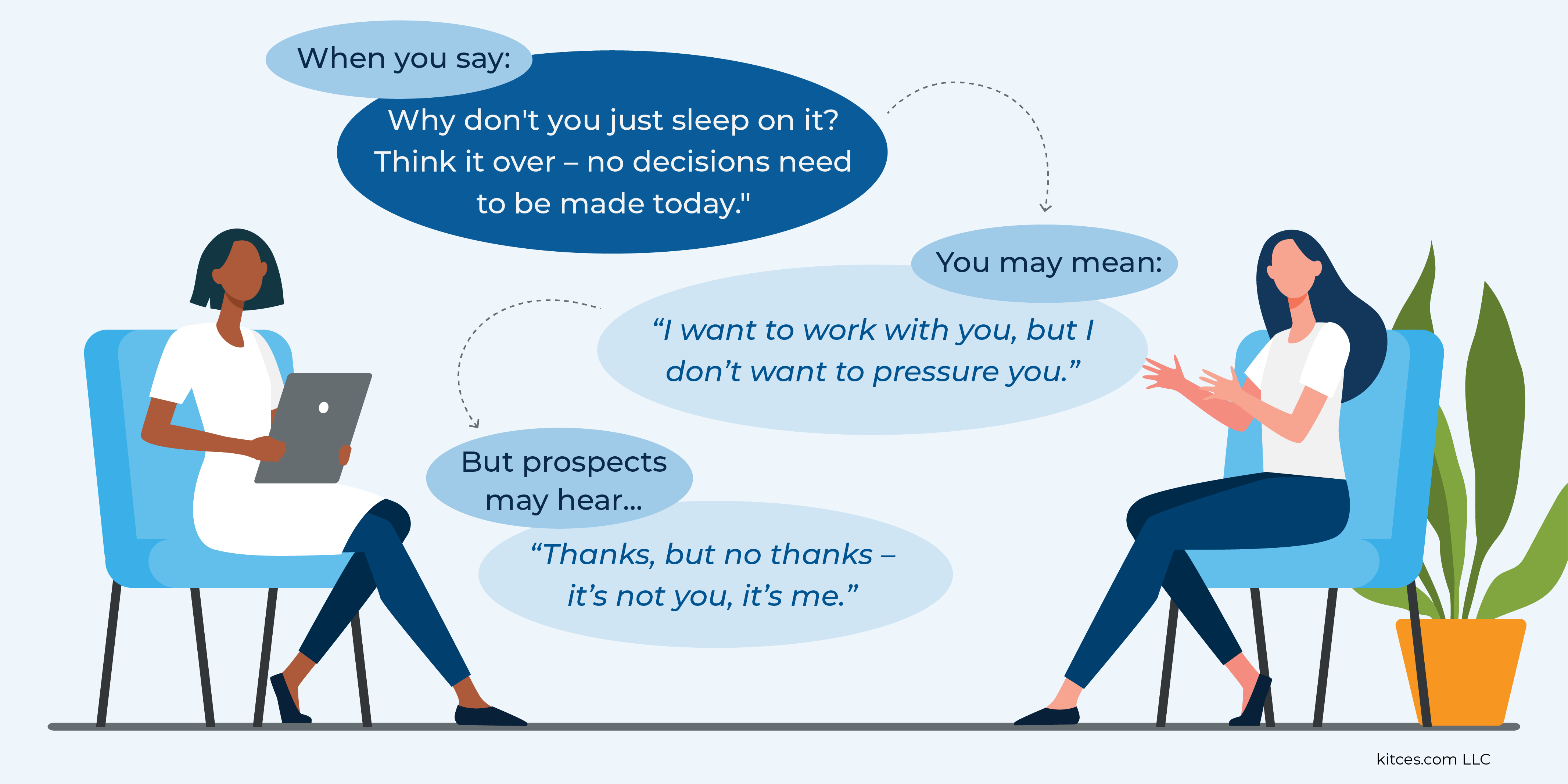For many financial advisors, encouraging new prospects to “think it over” at the end of an initial meeting can seem like a gentle way to offer the prospect space to decide whether the relationship will be right for them, while at the same time, keeping the advisor from feeling that they may be coming across too aggressively by making an immediate sales pitch. However, when a prospect meeting goes really well, and the prospect clearly sees the benefit of engaging with the advisor, ending the meeting with “Think it over” can interrupt the momentum of the meeting and send mixed messages to the prospect that, even though the meeting went really well, the advisor wasn’t that enthusiastic about the potential relationship (because otherwise, why wouldn’t they have asked them about the next steps to engage?). Instead, advisors can take a more direct approach in introducing the next steps to becoming a client during a discovery meeting to keep the momentum going and potentially increase the chances that the prospect will become a client.
While using an approach that encourages a customer to “think it over” can work well when selling products on a transactional basis between the salesperson and the customer (especially for high-cost products where the customer’s behavioral biases come into play and offer the strategy powerful support), selling services to be rendered through an ongoing relationship (such as financial advice) is a very different process and requires a different approach to result in successful sales. In particular, financial advisors who offer ongoing services to clients can focus on 3 key areas that are unique to service-based sales as part of a successful sales strategy. These include 1) minimizing the prospect’s uncertainty, 2) understanding their specific problem, and 3) being a ‘true’ service professional (who not only is capable of selling what’s being offered but can also actually follow through and do the job with skill and expertise). Which means that it’s more important for advisors to sell a prospective client on their ability to skillfully understand and solve the prospect’s specific problems (rather than using tactics better suited to product sales).
For advisors who may feel anxious about coming across as too aggressive in asking for the sale in the first prospect meeting, supplying an agenda in advance that clarifies that the sale – the process of signing up as a client – will be discussed can make it easier by externalizing the issue and knowing that the prospect won’t be surprised by the conversation. With this approach, the prospect still has the option to agree to take the next steps to become a client or, if they’re not quite ready, to tell the advisor that they still need time to think things over. Regardless of whether they are ready or not, initiating the discussion on the next steps (and with the support of an agenda) can be an effective way to close the meeting without killing the momentum while reassuring the prospect that they would be a valued client and that the advisor is very much interested in working together.
Ultimately, the key point is that selling products and selling services are 2 very different processes, and encouraging prospects to “think it over”, while perhaps an effective product-sales tactic, is a less effective way to close a service-based financial planning relationship. Instead, by communicating that they have the skill and expertise to help the prospect identify, understand, and address their specific problems and can ultimately help them minimize the uncertainty that they’ve been struggling with, advisors can build and leverage valuable momentum with the prospect during the first meeting, potentially increasing the chances that the prospect will agree to become a client by the end of the conversation!


